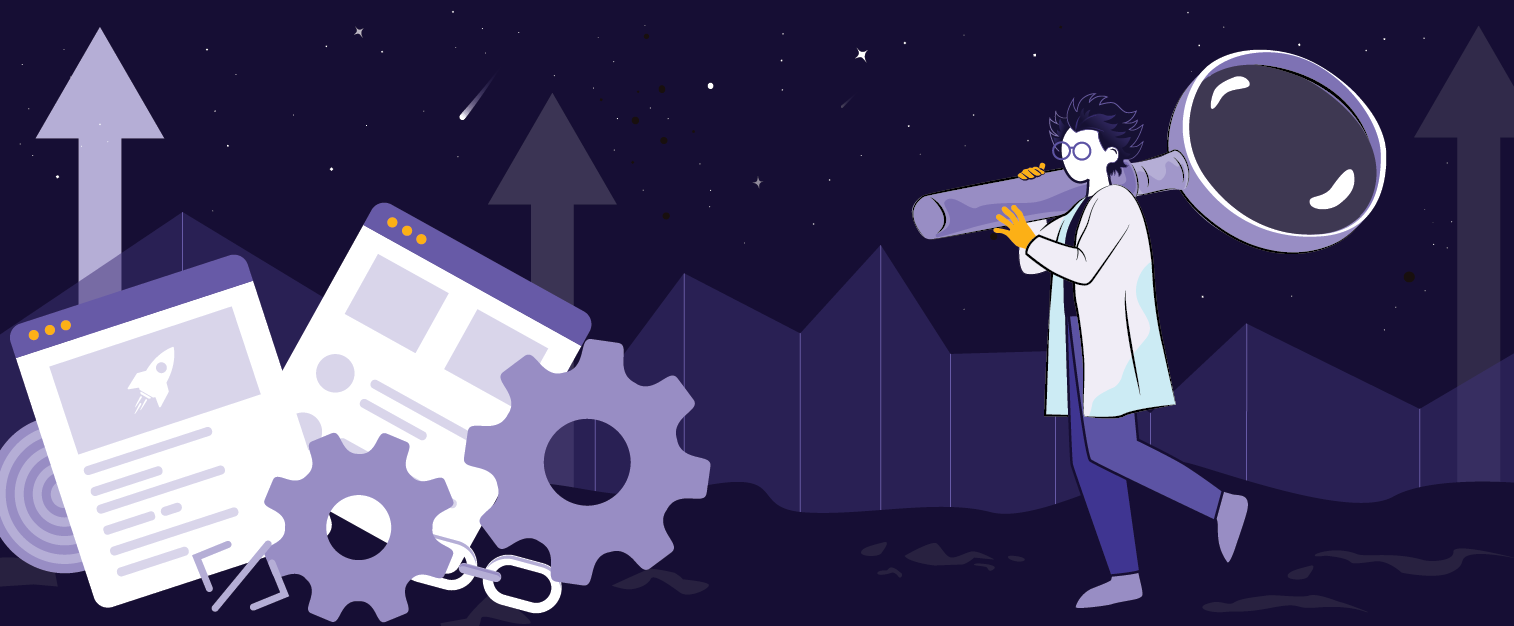Sending your data to our servers, please wait...





Oops... No results found.
Please try a different search phrase.
SEO 10 min read
Fed Fix: My Landing Page is Optimized but Not Ranking
Written by Natalie Yelton
Content Writer @ Galactic Fed
Expert reviewed by Dallin Porter
Marketing Director @ Galactic Fed
Published 06 Dec 2021
You’ve crafted the perfect landing page.
It tells people about your service or product and how it can help them clearly and concisely. It’s got a compelling call to action, too.
It features an engaging video that gives people just the right amount of information about what you do and why they should care about it.
You use accessible fonts and follow color contrast guidelines to ensure whoever lands on your web page will easily take in all of the content on offer.
Something’s the matter, though.
For whatever reason, your optimized landing page isn’t ranking on your targeted search engine results page (SERP.) And you can’t figure out what’s causing your landing page’s poor search engine ranking.
Don’t fret; Galactic Fed is here to assist! We’ve pulled together a landing page optimization 7-point checklist that will help you identify what might be hurting your ranking. Let’s dive into some of the most common issues that can cause web pages to not rank or lose their ranking over time.
Is your title tag optimized?
Your landing page’s title tag is visible on SERPs, web browser tabs, and social media platforms when it’s shared by someone, though search engines are able to decipher the topic of your landing page without exact keywords in your HTML title tag.
To make and keep Google and other search engines happy, ensure your landing page title tag is between 50-60 characters long.
Double-check you don’t have any duplicate title tags as Google can sometimes read as duplicate content, which can harm your ranking.
Are your header tags optimized?
Source: HubSpot
HTML header tags structure your landing page content and show its hierarchy on a web page.
Ranked <h1> to <h6>, the use of header tags assists search engines with scanning your content. For your website visitors, header tags help them navigate through your landing page, making it easier for them to scan, understand, and complete a call to action.
Further, header tags are vital if someone is reading your landing page using a screen reader. They ensure your web page is accessible to all.
Check that your header tags are in the correct numerological order beginning with h1. Next, you’ll want to make sure your headings contain your keywords.
Is your meta description optimized?
Your meta description gives users more details about your landing page and helps them determine whether it answers their search query.
Sometimes left till the last moment and not given much thought, your meta description can influence your click-through rate, so it’s worth spending some time on to optimize. And given Google pulls info from your landing page to create a meta description, if you don’t write one yourself, why not make it as engaging as possible to people?
To optimize your meta description, make sure it’s under 155 characters. Add a call to action to entice people to click through, and as is the case with title tags, duplicate meta decisions can indicate to Google that there’s duplicate content on your site.
Want a little more help with crafting the perfect meta description for your landing page? See our recent guide on doing just that.
What’s the content like on your landing page?
The content of your landing page remains the most important aspect, and using keywords strategically within your content is the best way to help Google find your content and index it.
Make sure your keywords appear within the first 150 words of your landing page; this not only helps search engines scan your content but also tells site visitors what your content is about right at the top of the page.
Strike the right balance within your landing page design between text content and images, video, and call to action buttons.
Do you want to create a high-converting landing page for your company website that excites visitors and gets them to purchase your product or service? Check out our five building blocks for crafting the best landing page possible.
Are your images, videos, and graphs optimized?
Source: Rev
Your landing page will shine if it includes realistic imagery, videos, and infographics that help get across your message beyond the use of words while boosting the length of time people spend on your landing page.
To make Google a fan of your images and videos, ensure you include alt attributes on all images, graphs, charts, and infographics. This also ensures your site is accessible to people who use screen readers while surfing the web.
Adding transcripts and captions to your videos also improves accessibility while helping search engines understand what your non-text content is about, thus indexing it appropriately.
Is your landing page mobile-friendly?
Mobile now makes up over half of all web traffic globally, and Google is beginning to roll out mobile-first indexing.
This means that Google will first look at the mobile version of your landing page when crawling, indexing, and ranking your, not just your desktop version.
Ensure your landing page uses a responsive design. Google provides guidance on mobile-first indexing that can help you make sure your landing page looks its best, no matter if someone is viewing it on the phone or on their laptop.
What’s your landing page’s load speed?
Page speed is now one of the most important SEO factors today when it comes to landing page ranking. If your landing page doesn’t load fast, don’t expect to get a top spot on your target SERP. Google Core Web Vitals update shows just how much they prioritize the user experience when it comes to the web.
Put your landing page URL into Google’s PageSpeed Insights to figure out if you’ve got a loading speed issue, either on desktop or mobile, quickly and effortlessly:
Source: Google
How can you ensure your landing page loads as quickly as possible and continues to do so over time? See our comprehensive guide on what is E-A-T and how to improve it. We also covered Google’s recent Core Vitals Update and what it means for the SEO of your landings page and your website as a whole.
Are your internal links optimized?
If you have several pages on your company’s website that target the same topic, your internal links become less valuable, or in other words, they lose their link authority. To ensure search engines can identify and index your landing page as the most relevant page on the keyword or topic you want it to rank for, here’s what to do:
You can take a couple of actions to make sure Google prioritizes your landing page; the first task is to create a topic cluster.
Topic clusters help you weave pages together on your site that cover the same subject matter. You’ll want to identify a single page on your website to act as the prominent page, then interlink secondary pages that you don’t link ranking less (your landing page shouldn’t be a secondary page that links to a higher-ranking page.) Use anchor text that includes your target keywords when linking to other subject-relevant web pages.
You can also try using redirects. These should be used sparingly, though, as they can disrupt a site visitor’s own navigation through your website, impacting your user experience. Try redirecting visitors away from less prominent web pages to the landing page that you’d like to improve the ranking of.
Dot your i’s and cross your t’s to get your landing page ranking
We hope following our 7-point checklist will help your company figure out what’s causing your landing page ranking woes. Double-check all of your title tags, header tags, and give your meta description some tender-loving care.
Take a second look at the content of your landing page to see if improvements can be made that affect your ranking, like word count and keyword placement, while ensuring all images, videos, and graphs are backed up with alternative text, captions, and transcripts.
With Google’s focus on usability, particularly improving how mobile-friendly websites are, it’s vital that your landing page is optimized for people viewing from their cell phone or tablet. Get your landing page loading as fast as possible to decrease bounce rate and make it easy for search engines to rank your landing page higher.
And finally, carve out some time to review your internal links to and from your landing page. Consider creating a topic cluster with your landing page as the prominent web page and redirecting site visitors to your landing page from less-important pages on your site.
Here at Galactic Fed, we optimize our client’s websites daily. Our team of growth marketing experts takes a holistic approach to your SEO to enhance authority, content, visibility and make sure every element of your landing page is ready for a surge in new visitors. We can help you get your landing page at the top of your targeted search engine results page from ongoing link-building and Google Best Practices SEO Site Audits to on-page optimization and SEO copywriting. Why not partner with us today and watch your growth skyrocket?

Natalie Yelton
Content Writer @ Galactic Fed



